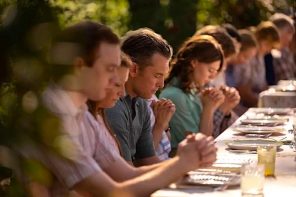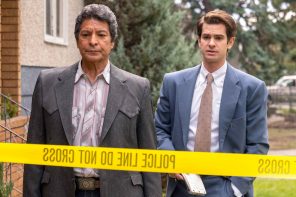Hours after top-ranking LDS Church leaders made national headlines with a public acknowledgment that past Mormon leaders had “made mistakes” and a call for greater acceptance of Mormons who question controversial aspects of the faith, Church representatives turned away nearly two hundred Mormon women seeking stand-by tickets to a restricted men’s-only session of the faith’s semi-annual global conference.
Mormon women travelled from as far away as New York, Florida, and Germany to take part in the collective action organized by the group Ordain Women as a gentle and symbolic demonstration against pervasive gender segregation in LDS Church administration and leadership.
All observant men and boys over the age of 12 are eligible for ordination to the Mormon lay priesthood, and the Church’s theological, liturgical, financial, and administrative decisions are made by an exclusively-male chain of command.
“I have heard from many women, ‘I see nothing wrong with the status quo. I feel equal,’” said Ordain Women founder Kate Kelly to a pre-demonstration gathering in a downtown Salt Lake City park. “To them I say: you can feel respected, supported and validated in the church, but equality can be measured. Equality is not a feeling. In our church men and women are not equal.”
After hymns and prayers, Ordain Women participants walked to elm-lined Temple Square, the heart of historic Mormonism and site of the Church’s General Conference.
As men and boys streamed into the Tabernacle to take their seats for the evening meeting, women waited outside to ask for permission to enter. (For video, click here.)
One by one, the women stepped forward to speak with LDS Church representative Doug Peterson.

Kate Kelly approached first. “I understand that all men, even men who are not members of the church and have no investment in Mormonism, are permitted to attend,” she said. “I am a returned missionary and a faithful Mormon woman, and I would like to listen to the prophet in person.” Kelly was not permitted to enter.

“I’ve been waiting to ask this question a long time,” said white-haired Nadine Hansen of Cedar City, Utah, a lay scholar of Mormon theology and history, as she stepped forward to request access to priesthood session. Hansen smiled and shook hands with Peterson.

Other participants, like Stephanie Lauritzen of Salt Lake City, were turned away from the door of the historic Mormon Tabernacle with tears streaming down their cheeks.

A few minutes before the session’s scheduled six o’clock start, maintenance crews parked a garbage truck between the line of waiting women and the Tabernacle door.

“I thought it was strange to have a truck weaving in and out of the traffic on Temple Square during Conference,” said Ordain Women participant Heather Olsen Beal of Nacogdoches, Texas.
When the truck pulled away, a church official had drawn a barrier across the Tabernacle doors.
Participants returned to a local park to listen to Conference on their cellphones—the first time in history that Church officials permitted broad media access to the event, a move some have characterized as a concession to ticket requests from Ordain Women leaders.
Inside the Tabernacle and the nearby Conference Center, rows of seats went unfilled.
Saturday’s Ordain Women action has initiated an unprecedented conversation about power, leadership, and gender within the world of Mormonism. Mormon digital social networks teemed this weekend with debate over the action. For their part, several LDS Church leaders addressed gender issues during General Conference sessions, offering a mixed and sometimes uneven set of messages, with one Church leader caricaturing feminists as showing “outright contempt” for home and family.
The experience of being turned away from the Tabernacle, said Kate Kelly, “really encapsulated how we feel being excluded every single day. It embodied our daily, weekly, yearly struggle of not being equal in the church and being turned away from full experience and engagement in the gospel we love.”
“I knelt down to pray before I left,” said Lori LeVar Pierce of Columbus, Mississippi. “The message came to my mind is that ‘this is hard, but this is what you are here for, and now is the time.’ I just felt warmth and support from the other side of the veil.”
“My entire adult life I have believed that there will come a time when women will be ordained in the LDS Church,” Pierce continued. “This is the first time I’ve been able to stand up and say so. And as I do stand up, I get many private messages of support from fellow Mormons—including people I don’t expect.”
“After spending most of my life following social stigmas that silence Mormon women and compel us to feign that we love our exclusion, it was like a miracle to see so many women willing to openly express their righteous desires to fully participate in the church,” said Ordain Women participant April Young Bennett.
Nancy Ross, a professor at Dixie State University in St. George, Utah, who studies digital media and Mormon social movements, found in a post-event survey that the vast majority of Ordain Women supporters and participants surveyed—77%—attend church three times a month or more.




